Many aquariums are home to tropical aquatic plants, invertebrates and ornamental fish, which prefer a higher water temperature than our regular room temperature. In order to reach temperatures higher than our average room temperature of about 20°C, you, as an aquarist can make use of various heaters. In this article we’ll introduce different heaters for your aquariums.
Temperature control

First of all, the basic equipment of any aquarium should always include a suitable thermometer. Many different variants are available, be it normal thermometers with a suction cup, hang-on variants or models with digital display. All serve the purpose of constant temperature monitoring in the aquarium and should therefore be easy to read for the aquarium owner. With those, you can monitor at any time, whether or not the temperature in the aquarium tank is right. Got trouble with high temperatures during summer? Then we recommend reading the following article on "cooling an aquarium".
Floor- and substrate heaters
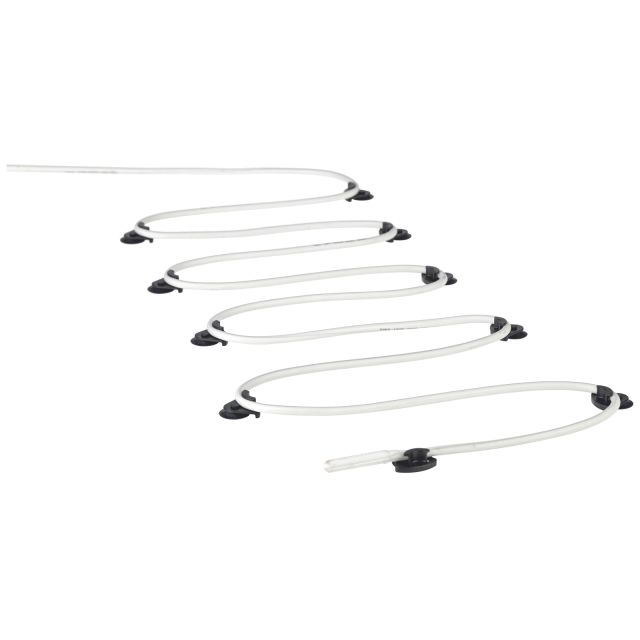
Substrate- or floor heaters are known in aquaristics as heating cables or coils, that run through the bottom layers of the aquarium’s substrate. They are, matter of factly, an underfloor heating system for your aquarium. Where “real” floor heaters are pretty powerful and adjustable, substrate heaters are chracterized by low but constant heating capacity. Usually they are no adjustable.
"Real" floor heater are designed to heat the whole aquarium via the substrate, using it as a heat accumulator, causing the heated water to rise up due to thermal. By now, floor heaters for aquariums of this kind are somewhat controversial, because they sometimes cause extreme temperature differences and temperature fluctuations between the substrate and water column due to the constant on/off of the heater. These strong fluctuations are sometimes rather unfavorable for the microorganisms living in the soil and also for plant roots and there is no stable ecosystem established in the aquarium.
Substrate heaters on the other hand are not primarily there to heat up an aquarium. Rather, the thermal is used to create a better circulation of water, enabling a better nutrient and oxygen transport. The roots of the aquarium plants are better supplied and thus the growth of the plants is boosted, furthermore, pollutant-eating bacteria profit from the better circulation and provision with nutrients and oxygen. In addition, a substrate heater reduces the risk of getting low-oxygen zones in the substrate, where toxic digester gases can form. Substrate heaters work better with coarser grains such as gravel or soil, but fine sand jeopardizes water circulation and should therefore not be used in combination with a substrate heater.
Precision heaters
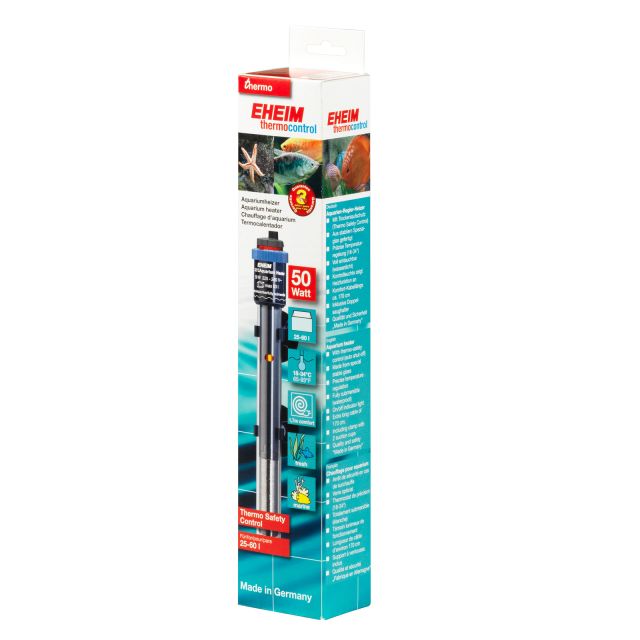
The so-called adjustable heaters or precision heaters are heating elements for aquariums that can be adjusted freely over a certain range of temperatures. With the help of the adjustable heater, the degree in Celsius can be customized individually. A temperature increase in the context of a fish disease treatment? Cooler water to increase spawning readiness or to simulate colder seasons? With an adjustable heater in the aquarium, this is no problem.
Automatic heaters
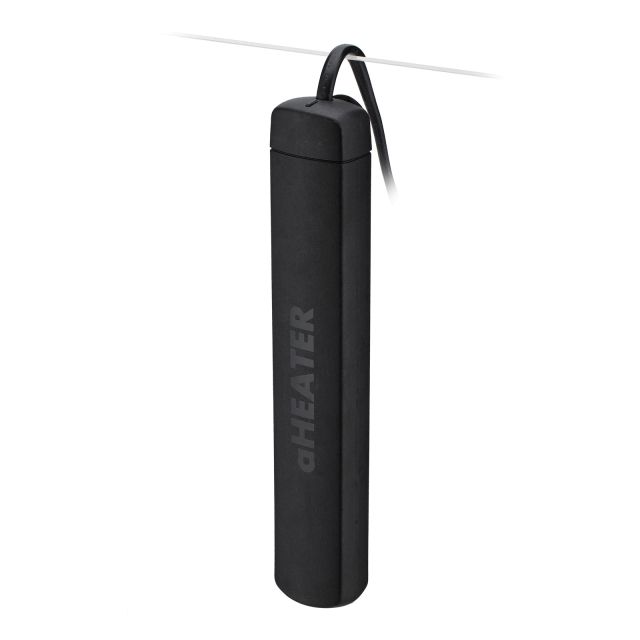
As an alternative to adjustable heaters, models with a pre-set temperature of e.g. 25 °C are available as well. Often those models are a little more affordable than adjustable heaters, and might have constructional benefits as well (like very flat or small heating elements, making them optically less obstrusive). The obvious disadvantage is the lack of flexibility in water temperature. On top of that, usually only very few temperatures can be chosen from (actually, usually only the one we already mentioned: 25 ° C).
Thermofilter
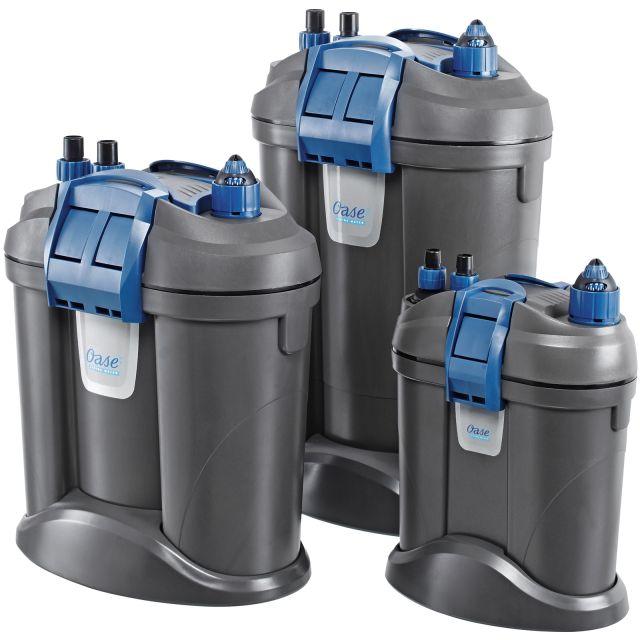
A thermofilter combines a typical, external filter with an aquarium heater. The heating unit is built into the filter housing and can even be retrofitted (for example in the models BioMaster Thermo and FiltoSmart Thermo from Oase). The big advantage here is, to have all important tech in one spot. Furthermore you won’t have to install a heater inside the aquarium tank, providing more space inside and removing a technical component that might otherwise offend the eyes. An example for a typical thermofilter would be the Eheim professionel 3 1200XLT. Furthermore, there’s a way to retrofit even unsuitable external filters with a heater (this will be explained in the following paragraph).
Inline Heater
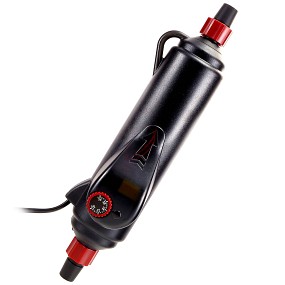
External- or inline heaters are aquarium heaters meant for installation outside the aquarium tank. They ensure clear view and an absence of visually distracting tech. An inline heater is installed into the filter’s hose line and can be stashed away in the cabinet alongside the external filter. It is important to keep the heater in an upright position to prevent air pockets, resulting in malfunctions. For example, the manufacturer Hydor offers models with wattages of 200 or 300 watts. Likewise, different hose connections (12/16 or 16/22 mm) can be selected.
Rule of thumb to determine a suitable heater
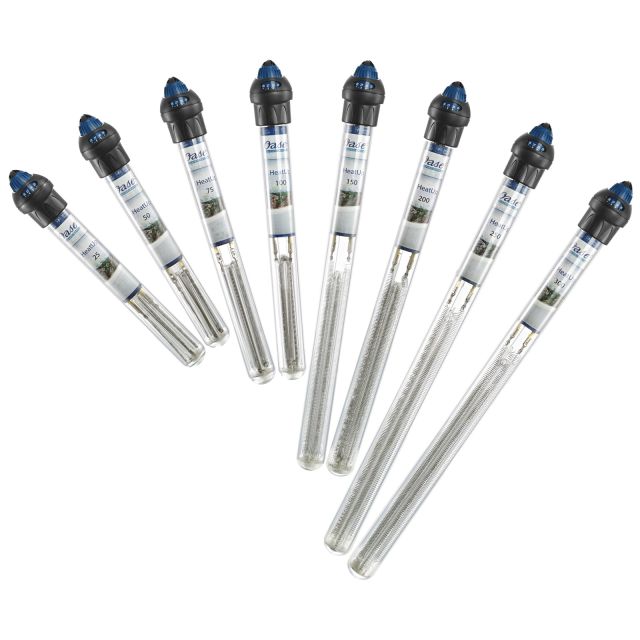
Many aquarists ask themselves which wattage the heater suitable for their aquarium should have. This value depends on the tank size and surrounding room temperature. Usually the item description of a heater available from an online shop includes a manufacturer recommendation on which heater fits what tank size. As a very rough rule of thumb it can be said, that 10 watts of heating power are needed for every ten liters of aquarium water.